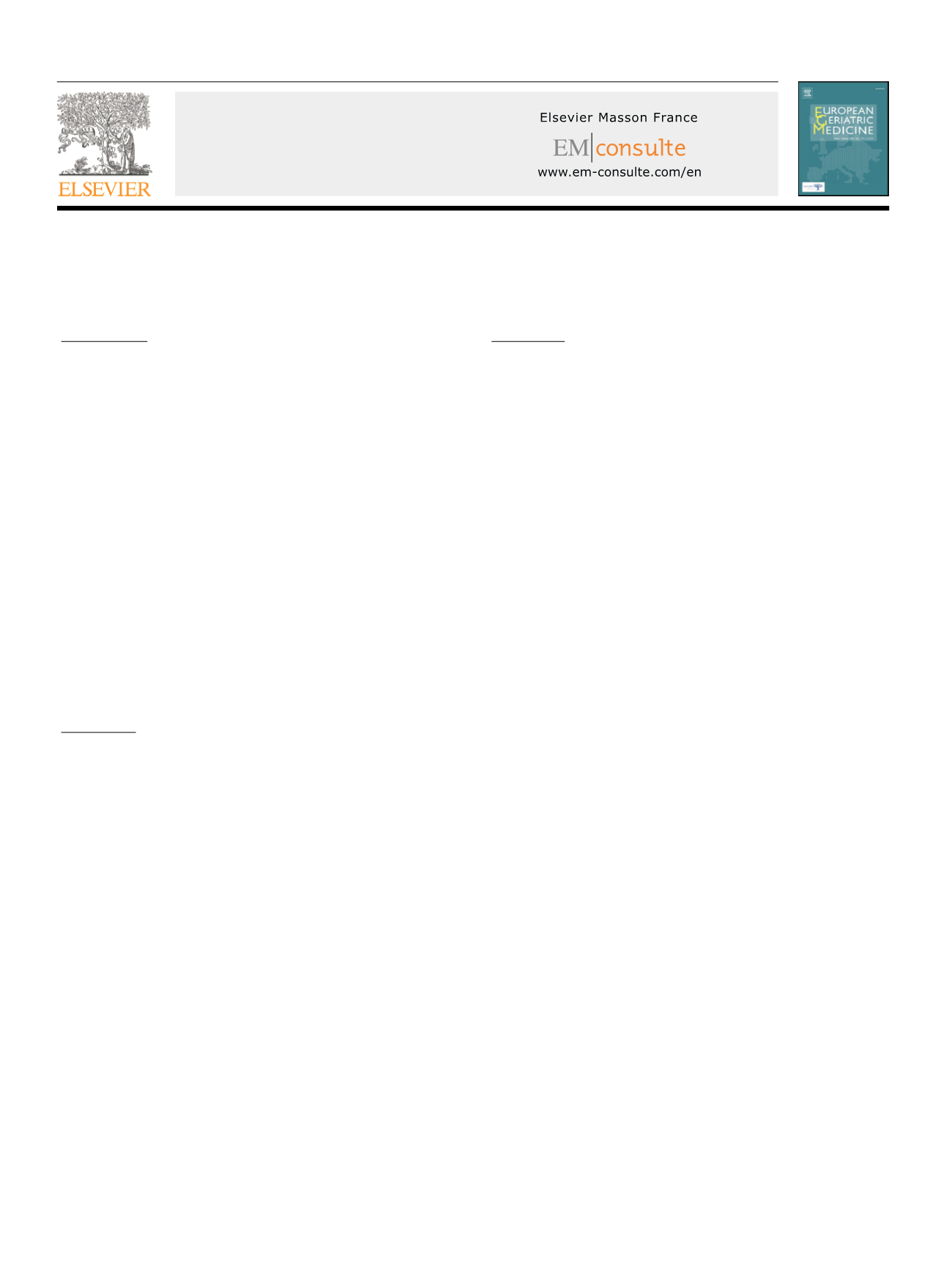

European Geriatric Medicine 6S1 (2015) S1–S4
Available
online
at
ScienceDirect
www.sciencedirect.comKeynote lectures
KL-01
Longevity for future Europeans
–
Genes and lifestyle
K. Christensen
The Danish Twin Registry, Odense C, Denmark
A rapidly increasing proportion of individuals in the Europe are
surviving into their tenth decade. While there is no doubt that
we are doing well in making the elderly survive better than
previously, the key questions are whether this will continue, what
the underlying mechanisms are, and whether we are also doing
good for the oldest-old. There is widespread concern that the basis
for the survival success is better survival of frail and disabled elderly
into the highest ages, the so-called “Failure of Success Hypothesis”.
An alternative hypothesis is that we are experiencing a “Success of
Success”, i.e., an increasing proportion of the population is living
to the highest ages in better health than previous generations.
The planning of and policy development for the future care of
the oldest-old will be highly dependent on whether one or both
genders are experiencing the “Failure of Success” or the “Success
of Success” as they may reach the highest ages. This scientific
knowledge is of fundamental importance for the sustainability of
modern societies.
KL-02
The world is aging, but individuals are not: what can we expect
in the future?
L. Fratiglioni
Karolinska Institutet, Stockholm, Sweden
It is the first time in the history of mankind that the proportion of
the aged population (conventionally identified as 65+) is growing
steadily worldwide. This is a relatively new phenomenon that
started in the industrialized countries and has now also reached
less developed areas of the world. Unfortunately, we have mostly
focused our attention on the negative consequences linked to the
aging of the population. This increasing focus on the negative
aspects has already led to deleterious consequences for individuals
who are frightened, for example, at the appearance of the first
signs of memory decline that are not always related to the
development of Alzheimer’s disease. We need to implement a
more scientific attitude in our approach to health and illness
in old age. During recent decades population-based studies have
made tremendous progress showing that aging is not necessarily
linked to disease and disability. Health status in late life is a
result of the complex interaction of genetic susceptibility, biological
factors, and environmental exposure, experienced over the whole
life span. Current evidence strongly supports the important role
of lifestyles and health behaviors – including nutrition, physical
activity and psychosocial factors – and vascular burden in the
pathogenetic process and clinical manifestation of several age-
related diseases such as dementia and multimorbidity. It is expected
that interventions leading towards the promotion of healthy
behaviors, the optimal control of vascular factors; the maintenance
of a socially-integrated lifestyle and mentally-stimulating activities
may lead to a longer and healthier life after the age of 75.
KL-04
Anti-aging medicine
V. Calabrese
University of Catania, Italy
Symptomatic Medicine operates only when the disease becomes
manifest, in the attempt to identify and contrast disease
progression. Even the concept of check up is based on biochemical
and instrumental analysis (echography, radiology,
. . .
) aims at
detecting (but not preventing) signals from factors triggering the
pathological process.
Preventive Medicine, on the contrary, invests in health by
implementing preventive strategies aimed at mitigating the risk
of disease and inverting the chronic pathological process.
Anti-aging medicine is a sort of preventive medicine, namely a
healthy aging medicine, which is the result of the gerontology
research on human aging and has the scope of keeping the patient
in a state of health and wellness.
Anti-aging medicine has been fairly developed over the last
decade due to discoveries in the field of genetics, pharmacology,
biotechnology, nano-technology and info-technology; as a
consequence, it has invaded the field of traditional symptomatic
medicine by progressively integrating the traditional with the
innovative approach, acquiring scientific dignity and restoring the
original intent of the medical mission, which is to prevent and/or
modify, rather than post-pone, the onset of disease.
Anti-aging medicine is not an end in itself, rather it is an
appropriate tool to determine the health level at any given time
and to implement preventive interventions to protect health from
a potential disease risk.
As a result, anti-aging medicine should be considered a healthcare
approach, which is focused on the prevention of disease and life
span increase, in contrast to symptomatic treatment; therefore, it
cannot be simply a medical procedure, nevertheless it should be
adopted from the health system and healthcare professionals.
In conclusion, anti-aging medicine is a predictive medicine because
it can predict, via genetic testing, the onset and development of
a pathological process in any cells of the organisms. In addition,
it is an holistic medicine as it considers the physiological and/or
pathological processes of our cells at a global level and in real
time. It is also a preventive medicine that enables to discover
what has been manifesting or will be manifest in the near or long
term future; along with this, it allows to implement interventions
that are able to prevent, modify, delay progression, postpone
the onset or block these biological processes. Moreover, it is a
regenerative medicine because it is capable of acting directly onto
mechanisms of cellular regenerations. Finally, anti-aging medicine
is a complementary medicine as it completes the traditional
medicine, although with different timing and modalities.
1878-7649//$ – see front matter © 2015 Elsevier Masson SAS and European Union Geriatric Medicine Society. All rights reserved.



















